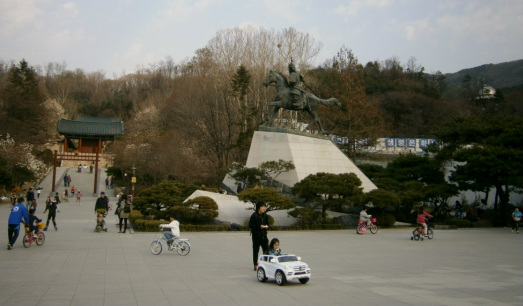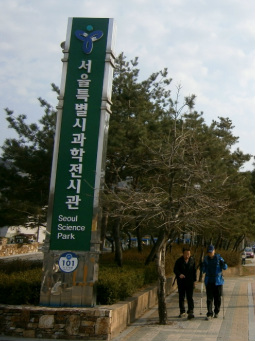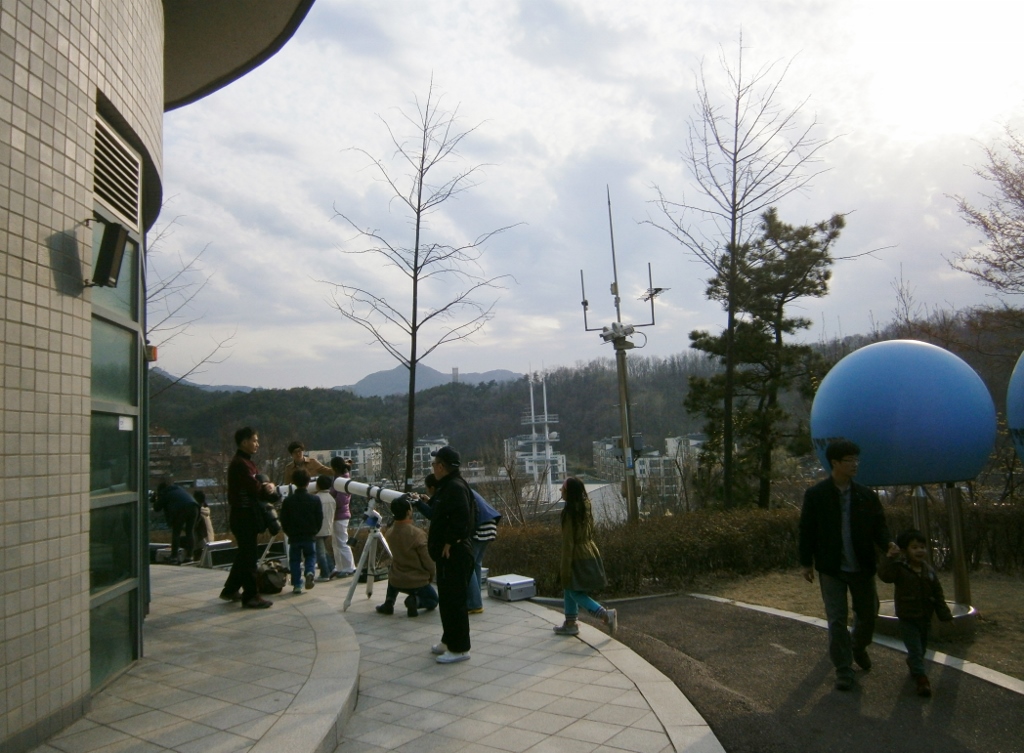Most of the denoted points-of-interest were part of the same complex: Nakseongdae Park (낙성대공원). It seemed to be a kind of grand shrine that doubles as a kid’s park. The shrine part of it revolves around a Korean general (or warlord) Kang Gam-Chan who fought the Mongols in the 1000s AD.
 Statue of General Kang Gamchan, Southern Seoul
Statue of General Kang Gamchan, Southern Seoul
Most of the park seems, on weekends, to be occupied by kids riding small bicycles or recklessly piloting electric-powered toy cars. Their wild swerving-around in those little cars cannot help but remind one of a certain stereotype…
 Seoul Science Park Entrance
Seoul Science Park Entrance
Walking past the above-described park dedicated to the memory of a long-dead general, something calling itself “Seoul Science Park” materializes on the left. It’s a sprawling complex surrounded by some short walking trails in the hills.
Next to this “Seoul Science Park” there also seems to be a farm plucked right out of rural Jeolla and plopped down in Seoul. I conclude that it is an experimental farm (whatever that means). Why else would it be there?
The most interesting feature of this place was its mini-planetariums (or, “planetaria”, if you insist). At the top of the hill overlooking Seoul Science Park, there is an observatory — that silver structure in the above. It is surrounded by little blue spheres (one is below), into which a person can put his head. On the inside of these spheres are compelling re-creations of the night sky. They are soundproof and “lightproof”, so the sensation I got was of being alone on a cloudless, pitch-black night in a very-non-light-polluted area.




thank you, I really enjoyed reading your article.